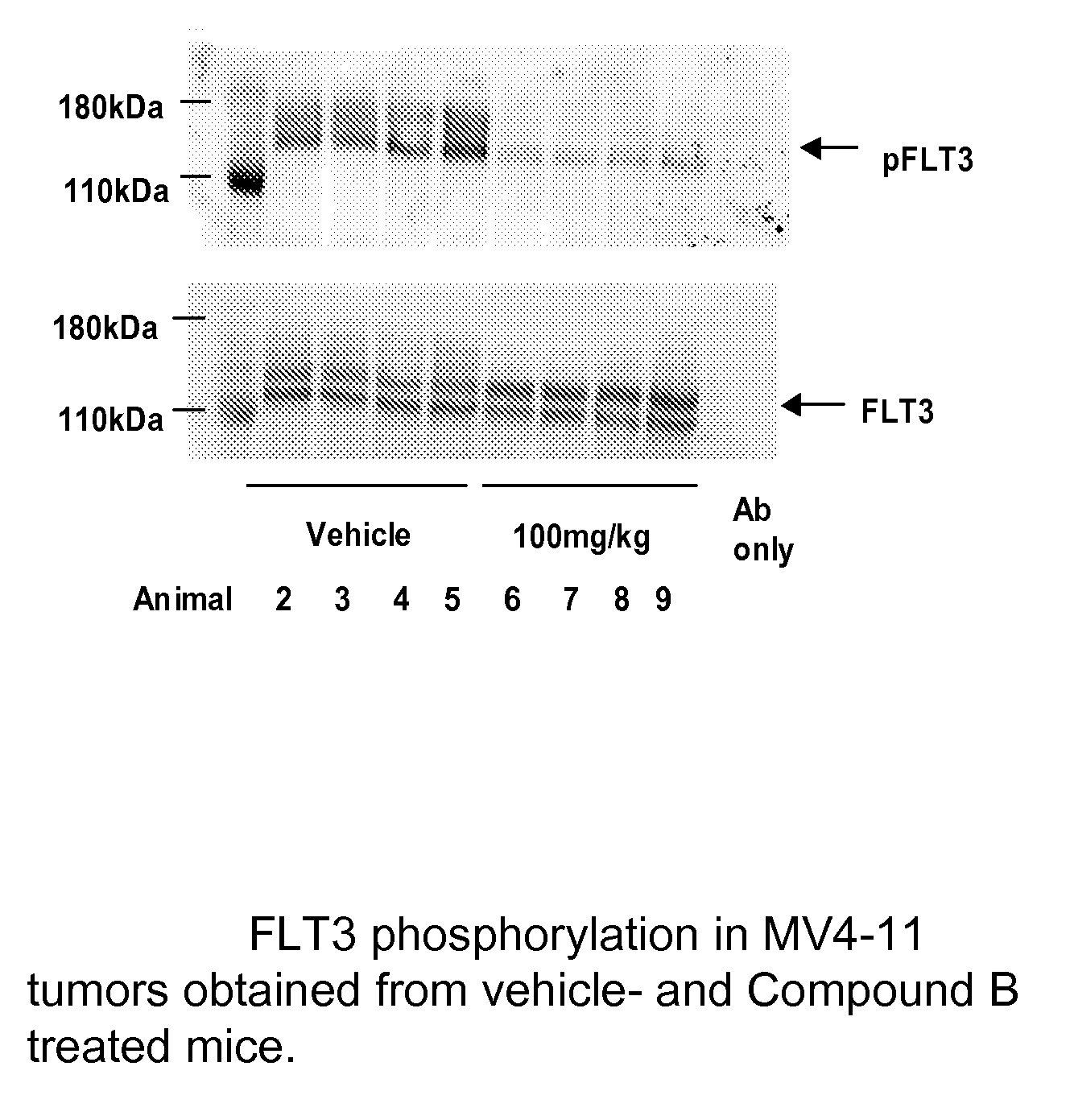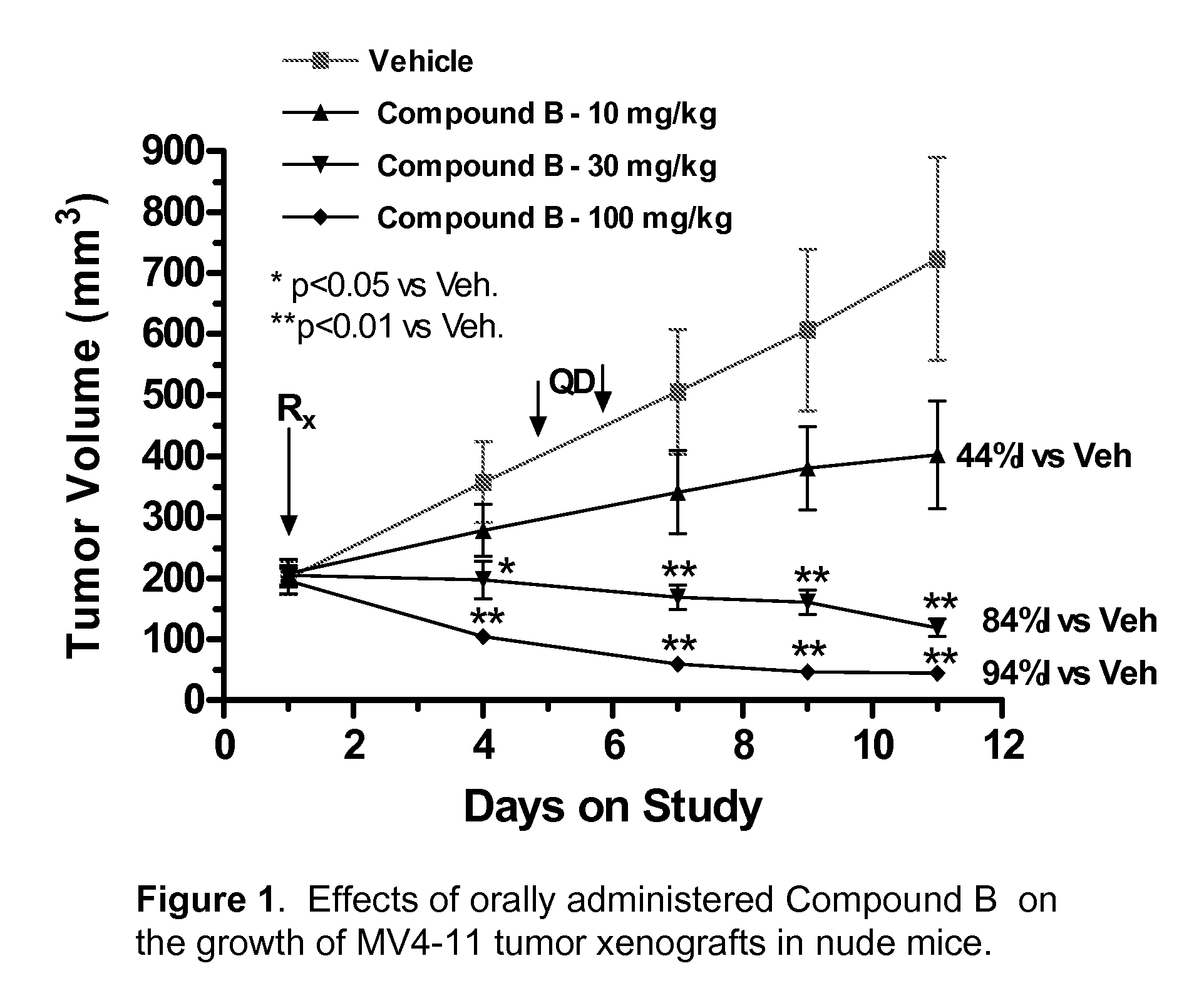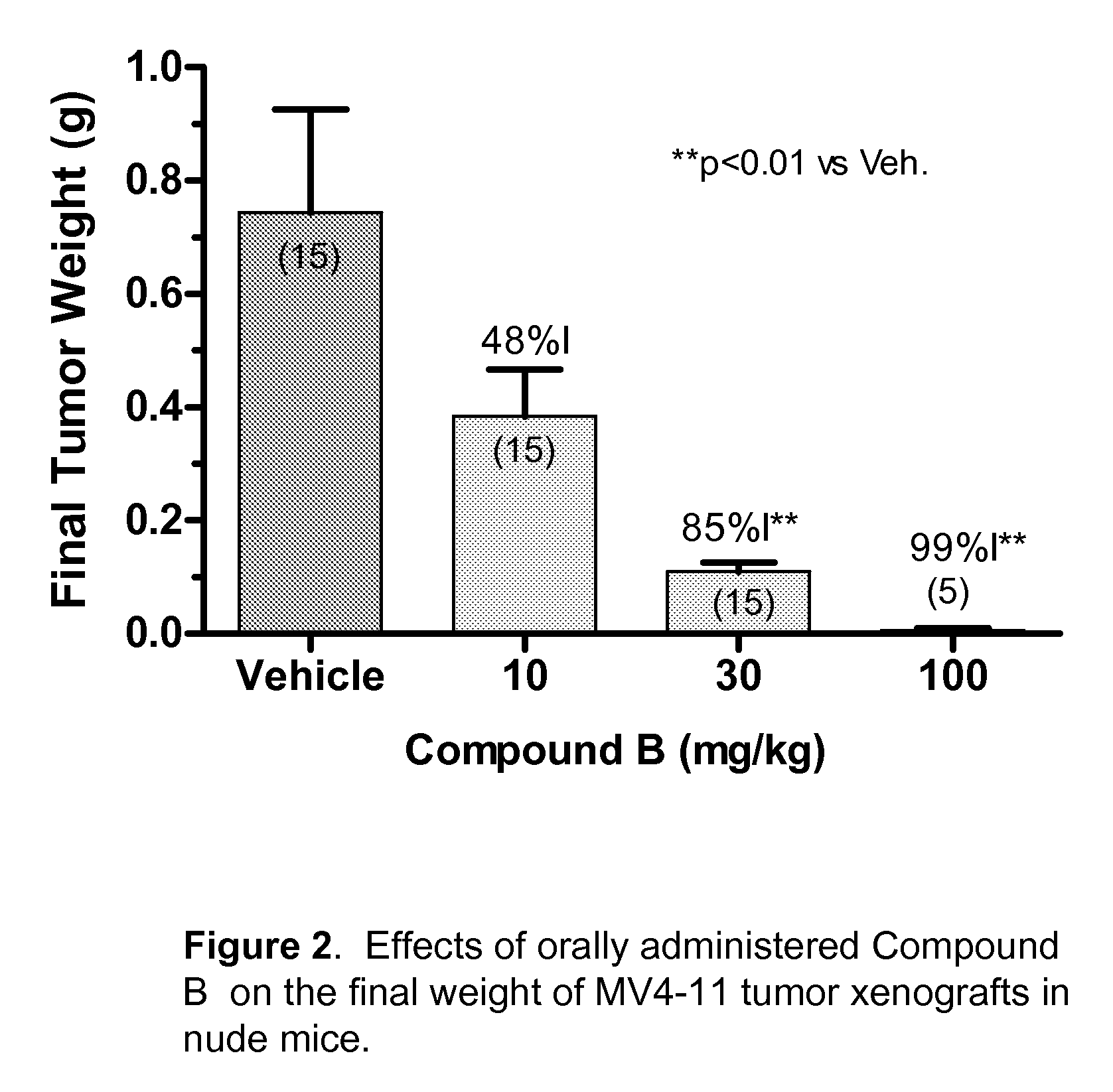Synergistic modulation of flt3 kinase using a flt3 inhibitor and a farnesyl transferase inhibitor
a technology of farnesyl transferase and flt3 kinase, which is applied in the direction of heterocyclic compound active ingredients, biocide, drug compositions, etc., can solve the problems of high toxicity and resistance of aml, patients with itd mutation, and significant unmet clinical need for aml, so as to achieve synergistic cytotoxic
- Summary
- Abstract
- Description
- Claims
- Application Information
AI Technical Summary
Benefits of technology
Problems solved by technology
Method used
Image
Examples
example 1
5-Cyano-furan-2-carboxylic acid
[0539]
[0540]To a flask with a stir bar and Vigreaux column under Ar was added 2-formyl-5-furancarboxylic acid (2.8 g, 20 mmol), hydroxylamine hydrochloride (2.7 g, 40 mmol), and dry pyridine (50 mL). The mixture was heated to 85° C., acetic anhydride (40 mL) was added and the mixture was stirred for 3 h. After cooling to 60° C., water (250 mL) was added and the mixture was stirred at RT for 70 h. The mixture was acidified to pH 2 with concentrated hydrochloric acid and extracted with 3:1 dichloromethane-isopropanol (8×100 mL). The combined organic layers were washed with water (100 mL), brine (100 mL), dried over anh sodium sulfate and concentrated in vacuo to afford the title compound as a tan solid (1.26 g, 46%). 1H-NMR (CD3OD; 400 MHz): δ 14.05 (br s, 1H), 7.74 (d, 1H, J=3.8 Hz), 7.42 (d, 1H, J=3.8 Hz).
example 2
4-Cyano-1H-pyrrole-2-carboxylic acid
[0541]
[0542]The title compound was prepared by the literature procedure (Loader and Anderson, Canadian J. Chem. 59: 2673 (1981)). 1H-NMR (CDCl3; 400 MHz): δ 12.70 (br s, 1H), 7.78 (s, 1H), 7.13 (s, 1H).
example 3
4-Cyano-1-(2-trimethylsilanyl-ethoxymethyl)-1H-imidazole-2-carboxylate potassium salt
[0543]
a) 1-(2-Trimethylsilanyl-ethoxymethyl)-1H-imidazole-4-carbonitrile
[0544]
[0545]A flask charged with imidazole-4-carbonitrile (0.5 g, 5.2 mmol) (Synthesis, 677, 2003), 2-(trimethylsilyl)ethoxymethyl chloride (SEMCl) (0.95 mL, 5.3 mmol), K2CO3 (1.40 g, 10.4 mmol), and acetone (5 mL) was stirred for 10 h at RT. The mixture was diluted with EtOAc (20 mL) and washed with water (20 mL) and brine (20 mL) and the organic layer dried over MgSO4. The crude product was eluted from a 20-g SPE cartridge (silica) with 30% EtOAc / hexane to give 0.80 g (70%) of the title compound as a colorless oil. Mass spectrum (CT (CH4), m / z) Calcd. for C10H17N3OSi, 224.1 (M+H). found 224.1.
b) 2-Bromo-1-(2-trimethylsilanyl-ethoxymethyl)-1H-imidazole-4-carbonitrile
[0546]
[0547]To a solution of 1-(2-trimethylsilanyl-ethoxymethyl)-1H-imidazole-4-carbonitrile (0.70 g, 3.1 mmol) (as prepared in the previous step) in CCl4 (10 mL) w...
PUM
| Property | Measurement | Unit |
|---|---|---|
| resistance | aaaaa | aaaaa |
Abstract
Description
Claims
Application Information
 Login to View More
Login to View More - R&D
- Intellectual Property
- Life Sciences
- Materials
- Tech Scout
- Unparalleled Data Quality
- Higher Quality Content
- 60% Fewer Hallucinations
Browse by: Latest US Patents, China's latest patents, Technical Efficacy Thesaurus, Application Domain, Technology Topic, Popular Technical Reports.
© 2025 PatSnap. All rights reserved.Legal|Privacy policy|Modern Slavery Act Transparency Statement|Sitemap|About US| Contact US: help@patsnap.com



